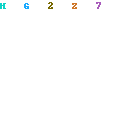In baseball, the pitcher is the player who throws the baseball from the pitcher's mound toward the catcher to begin each play, with the goal of retiring a batter, who attempts to either make contact with the pitched ball or draw a walk. In the numbering system used to record defensive plays, the pitcher is assigned the number 1. In the National League and the Japanese Central League, the pitcher also bats. Starting in 1973 with the American League and spreading throughout the 1980s and 1990s, the hitting duties of the pitcher have generally been given over to the position of designated hitter, a cause of some controversy.
In most cases, the objective of the pitcher is to deliver the pitch to the catcher without allowing the batter to hit the ball with the bat. A successful pitch is delivered in such a way that the batter either allows the pitch to pass through the strike zone, swings the bat at the ball and misses it, or hits the ball poorly (resulting in a pop fly or ground out). If the batter elects not to swing at the pitch, it is called a strike if any part of the ball passes through the strike zone and a ball is when no part of the ball passes through the strike zone. A check swing is when the batter begins to swing, but then stops the swing short. If the batter successfully checks the swing and the pitch is out of the strike zone, it is called a ball.
There are two legal pitching positions, the windup and the set position or stretch. Either position may be used at any time; typically, the windup is used when the bases are empty while the set position is used when at least one runner is on base. Each position has certain procedures that must be followed. A balk can be called on a pitcher from either position. A power pitcher is a pitcher who relies on the velocity of his pitches to succeed. Generally, power pitchers record a high percentage of strikeouts. A control pitcher succeeds by throwing accurate pitches and thus records few walks.
Nearly all action during a game is centered around the pitcher for the defensive team. A pitcher's particular style, time taken between pitches, and skill heavily influence the dynamics of the game and can often determine the victor.
The type and sequence of pitches chosen, depends upon the particular situation in a game. Because pitchers and catchers must coordinate each pitch, a system of hand signals is used by the catcher to communicate choices to the pitcher, who either vetoes or accepts by shaking his head or nodding. The relationship between pitcher and catcher is so important that some teams select the starting catcher for a particular game based on who the starting pitcher is. Together, the pitcher and catcher are known as the battery.
Starting with the pivot foot on the pitcher's rubber at the center of the pitcher's mound, which is 60 feet 6 inches (18.44 m) from home plate, the pitcher throws the baseball to the catcher, who is positioned behind home plate and catches the ball. Meanwhile, a batter stands in the batter's box at one side of the plate, and attempts to bat the ball safely into fair play.
Although the object and mechanics of pitching remain the same for all pitchers, pitchers may be classified according to their roles and effectiveness. The starting pitcher begins the game and he may be followed by various relief pitchers, such as the long reliever, the left-handed specialist, the middle reliever, the setup man, and/or the closer.











Comments (0)
Post a Comment